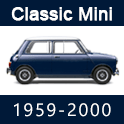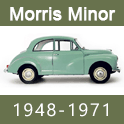| Orig. Posting Date | User Name | Edit Date |
| May 4, 2012 06:28AM | Cheleker | |
| May 4, 2012 04:23AM | MPlayle | |
| May 3, 2012 01:31PM | MPlayle | |
| May 3, 2012 12:33PM | geoO | |
| May 3, 2012 12:04PM | dklawson | |
| May 3, 2012 11:09AM | MPlayle | |
| May 3, 2012 10:20AM | Spank | |
| May 3, 2012 09:56AM | MPlayle | Edited: May 3, 2012 11:02AM |
| May 3, 2012 09:35AM | dr. jinG | |
| May 3, 2012 09:24AM | Spank | |
| May 3, 2012 09:00AM | MPlayle | Edited: May 3, 2012 09:00AM |
|
Total posts: 10330
Last post: Jan 27, 2021 Member since:Dec 3, 2002
|
Cars in Garage: 0
Photos: 0 WorkBench Posts: 0 |

|
Add 73mm pistons to your list giving 1360cc.
|
Total posts: 1788
Last post: Feb 2, 2025 Member since:Feb 1, 2000
|
Cars in Garage: 0
Photos: 0 WorkBench Posts: 0 |

|
The other to cylinders had the pistons at/near the top and there is very little clearance between the piston and bore - no more than I have been led to expect. It is looking much like low miles on a recent rebuild that did not get seals & gaskets properly set to prevent leaks.
Onward with the project.
Cheers.
|
Total posts: 1788
Last post: Feb 2, 2025 Member since:Feb 1, 2000
|
Cars in Garage: 0
Photos: 0 WorkBench Posts: 0 |

|
Thanks again for the information.
PS: the "displacement chart" I did was based on the stock stroke (3.2" or 81.33mm), stock bore (2.78" or 70.6mm) and the formula:
displacement = bore * bore * 0.7854 * stroke * #cylinders (as found on Wikipedia).
|
Total posts: 1944
Last post: Jan 21, 2021 Member since:Jan 1, 2005
|
Cars in Garage: 0
Photos: 0 WorkBench Posts: 0 |

|
|
Total posts: 9241
Last post: Aug 17, 2023 Member since:Jun 5, 2000
|
Cars in Garage: 0
Photos: 0 WorkBench Posts: 0 |

|
Also remember when measuring the piston skirt diameter, take measurements both parallel and perpendicular to the wrist pin. One will be larger and that one is what the bore will be based on.
When you are looking at a simple re-ring of the block you have to make the measurements Spank mentioned for taper and oval. If they are really minor, you may get away with just cleaning up that top ring ridge Spank mentioned using a ridge-reamer followed by a hone of the bores.
|
Total posts: 1788
Last post: Feb 2, 2025 Member since:Feb 1, 2000
|
Cars in Garage: 0
Photos: 0 WorkBench Posts: 0 |

|
Thanks for clarifying where/how to measure. Measuring the pistons will be a moot point unless/until I pull them from the block. (Was hoping to not have to do that - depends on what the bearings may look like.) If I can turn up a bore-dial gauge, I may check them. I'll try the "fingernail" check first.
The intended plan for this engine is: valve job on the head, replace all seals/gaskets, install 3.1 final drive gears, replace old Weber DCD carb.
|
Total posts: 6349
Last post: Oct 22, 2023 Member since:Mar 9, 1999
|
Cars in Garage: 0
Photos: 0 WorkBench Posts: 0 |

|
Pistons are significantly smaller at the top than they are at their skirt bottom, which is where their size measurement is taken.You can see the top rings even on a new bore with new pistons.
The way to measure your bores is with a dial bore gauge. Calipers won't tell you much. You measure for taper and how oval the bore is besides just simply a fixed size. You need to get in the ring groove at the top of the bore (Where the top ring hit peak travel and is forced outward at the point of ignition). That's going to be your determining factor of how big a piston resize you may need. But if it grabs your fingernail when you pick at it, that's a good indication that you need a rebore. If it's just a little dimple inward, you may or may not depending on what the dial bore gauge tells you.
The bore is sized larger than the pistons by several thousandths and, again, based on how large the piston is at the bottom of the skirt.
|
Total posts: 1788
Last post: Feb 2, 2025 Member since:Feb 1, 2000
|
Cars in Garage: 0
Photos: 0 WorkBench Posts: 0 |

|
I'm making sure I understand how to properly assess what is in there. The cylinders had decent compression (147 to 152 across all 4 cylinders) when tested a few weeks ago. The engine has been both leaking significant oil as well as burning it (especially on start up, but even while running). By learning the relationship of the terminology, I can evaluate what is in there and determine if I have too much slop allowing blow-by.
I'll endeavor to measure what is in there. From reading tech articles on this site the cylinder bores should be straight forward to measure (supposed to be the same top-to-bottom). Measuring the pistons is more involved as they "taper"some to compensate for the slight expansion differences between top and bottom. Is measuring the piston crown the usual place?
Thanks again for the clarifications.
Edit: (added the sizing table below)
Based on the clarifications provided and the displacement formula:
+020 => 2.80" bore (71.13mm) => 1293cc displacement
+030 => 2.81" bore (71.374mm) => 1301cc displacement
+040 => 2.82" bore (71.60mm) => 1310cc displacement
+060 => 2.84" bore (72.14mm) => 1330cc displacement
+120 => 2.89" bore (73.5mm) => 1380cc displacement
Corrections appreciated if I have the table wrong.
|
Total posts: 4423
Last post: Oct 4, 2023 Member since:May 6, 2002
|
Cars in Garage: 0
Photos: 0 WorkBench Posts: 0 |

|
As I recall, a +0.020" bore is a 1293cc, and +0.030" bore is 1310cc.
**Dr. jinG**
"I tell you and you forget. I show you and you remember. I involve you and you understand." ~ Eric Butterworth
"The true charter of liberty is independence, maintained by force." ~Voltaire
|
Total posts: 6349
Last post: Oct 22, 2023 Member since:Mar 9, 1999
|
Cars in Garage: 0
Photos: 0 WorkBench Posts: 0 |

|
+030 = Your piston is .030" larger than stock, so 2.780" + .030" = 2.810" bore size.
Most modern sets of pistons are readily available in .020" increments. The .010" and .030" were popular sizes it seems back some time ago, but have fallen out of favor for some reason. Maybe someone else can explain why.
I've got loads of +.030" pistons and use them with no issues whatsoever. The cylinders are bored to accept the pistons needed. Why take a bore up to +.040" if +.030" will clean it up?
|
Total posts: 1788
Last post: Feb 2, 2025 Member since:Feb 1, 2000
|
Cars in Garage: 0
Photos: 0 WorkBench Posts: 0 |

|
I have not yet measured the pistons and bores to have reference numbers of what is actually in this engine.
I would like to better understand the relationship of "+010", "+030", "+040", and "+060" in piston size to bore sizing and engine displacement. I have the formula for displacement and can see the relationship of measured bore size to displacement, but do not understand the "+xxx" designation relationship. Are the "+xxx" designations on pistons 1/2 the bore difference from stock?
Stock 1275 bore is 70.6mm or 2.780in. 1293 bore is 71.13mm or 2.80in which is 0.020 greater than stock -> doe this equate to a "+010" piston?
Ultimately, I am trying to be able to determine what I've got in the engine and what can be done with it regarding the oil consumption and leaks. The cylinder/piston gapping tended to make the person helping pull the motor think something is mismatched - "+030" pistons in a "+040" bore?
Thanks.





